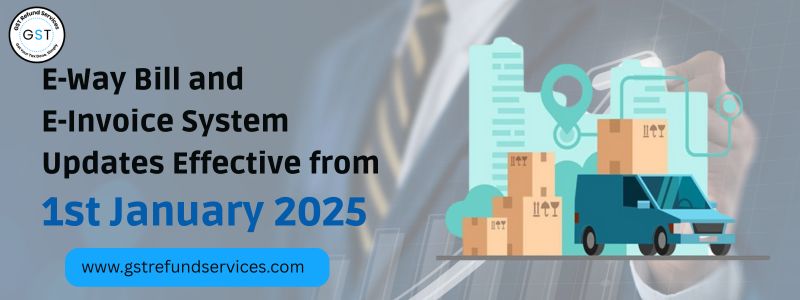New e-Way Bill Rules from January 1, 2025: Key Restrictions and Compliance Guidelines

What is an E-Way Bill?
- The E-Way Bill is an electronic document required under the Goods and Services Tax (GST) regime.
- It is mandatory when the value of goods being transported exceeds ₹50,000, whether inter-state or intra-state.
- It is generated on the GST E-Way Bill portal.
- The main objective is to track the movement of goods and ensure tax compliance.
New Rule Effective from January 1, 2025
1. 180 Days Restriction
- An E-Way Bill can only be generated for invoices issued within the last 180 days.
- If an invoice is older than 180 days, the portal will automatically block E-Way Bill generation for it.
2. Maximum Extension: 360 Days
- In certain limited circumstances, the maximum grace period is 360 days from the date of the invoice.
- Beyond 360 days, no E-Way Bill can be generated for that invoice, under any condition.
Example for Clarity
- Invoice Date: January 1, 2024
- 180-Day Deadline: June 29, 2024
- Maximum Allowable Date (with extension): December 26, 2024
- After this, the system will not allow an E-Way Bill for that invoice.
🔄 Portal Updates
- The E-Way Bill and E-Invoice portals have been upgraded by the GSTN.
- The system now automatically verifies the invoice date before allowing E-Way Bill generation.
- If the invoice is beyond the allowed period, it will be systematically rejected.
- No manual override or exception is permitted.
🎯 Purpose of This Amendment
- To prevent misuse of old or backdated invoices.
- To reduce fraudulent movement of goods.
- To ensure timely reporting and real-time tracking.
- To improve overall transparency and integrity in GST compliance.
⚠️ Impact on Businesses
| Area | Impact |
| Compliance | Businesses must dispatch goods within 180 days of invoice issuance. |
| Automation | ERP, billing, and accounting software must be updated to track limits. |
| Operations | Businesses need better logistics and inventory planning. |
| Penalty Risk | Non-compliance may lead to penalties under GST law (min ₹10,000). |
🛠️ Action Plan for Businesses
- Track Invoice Age: Monitor the date of every invoice before dispatch.
- Staff Training: Ensure logistics and accounts teams are aware of the new rule.
- Set Alerts: Use your ERP system to set reminders for aging invoices.
- Update Software: Make sure all software systems follow the 180-day logic.
📌 Conclusion
- This rule helps ensure timely movement of goods and proper tax compliance.
- Businesses need to adapt quickly to avoid penalties or disruptions.
- Keeping track of these GST changes is vital for smooth operations.
🙋♂️ Questions & Clarifications
- For any confusion, consult your GST practitioner or tax consultant.
Stay informed with the latest updates from GST Council and official portals.


